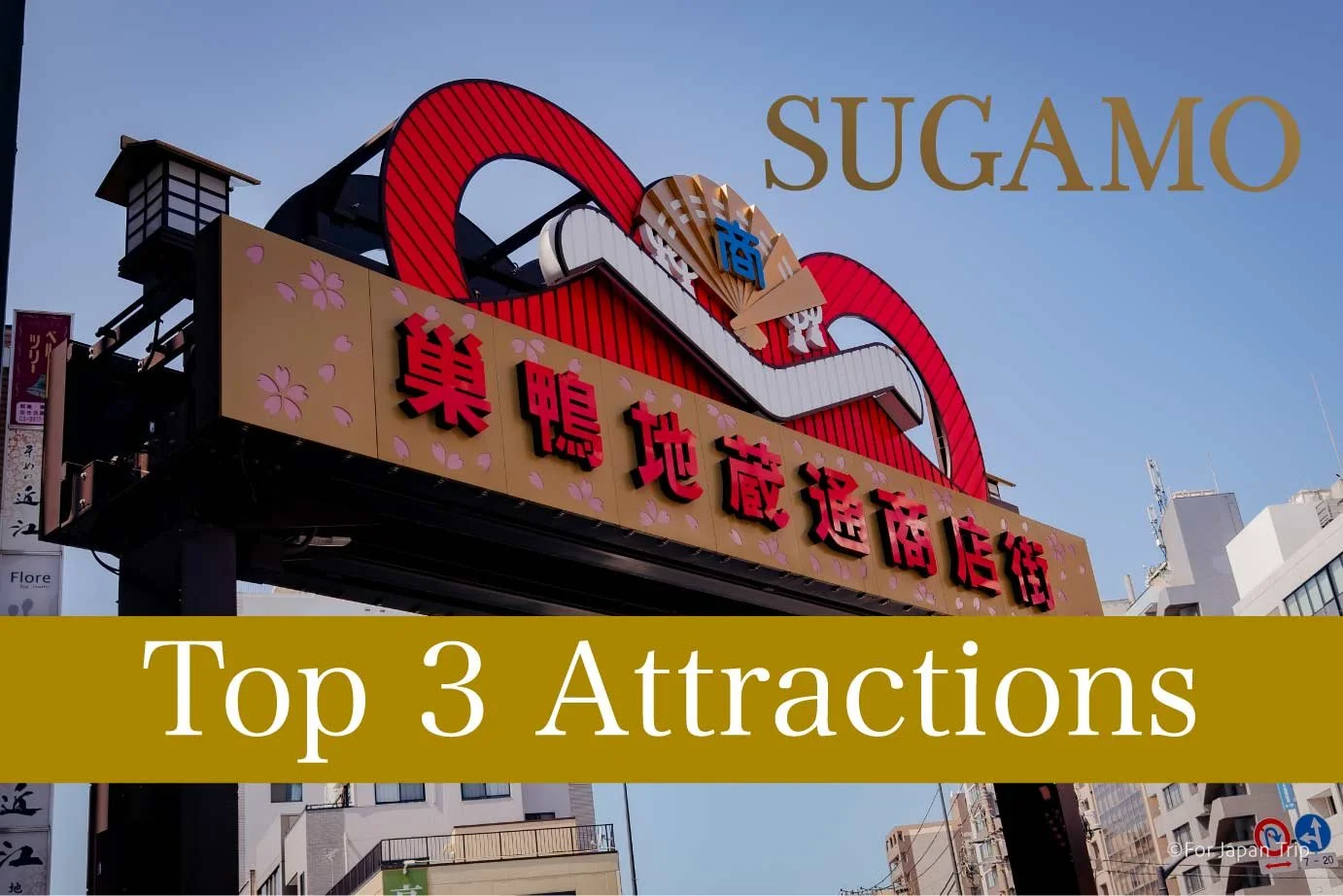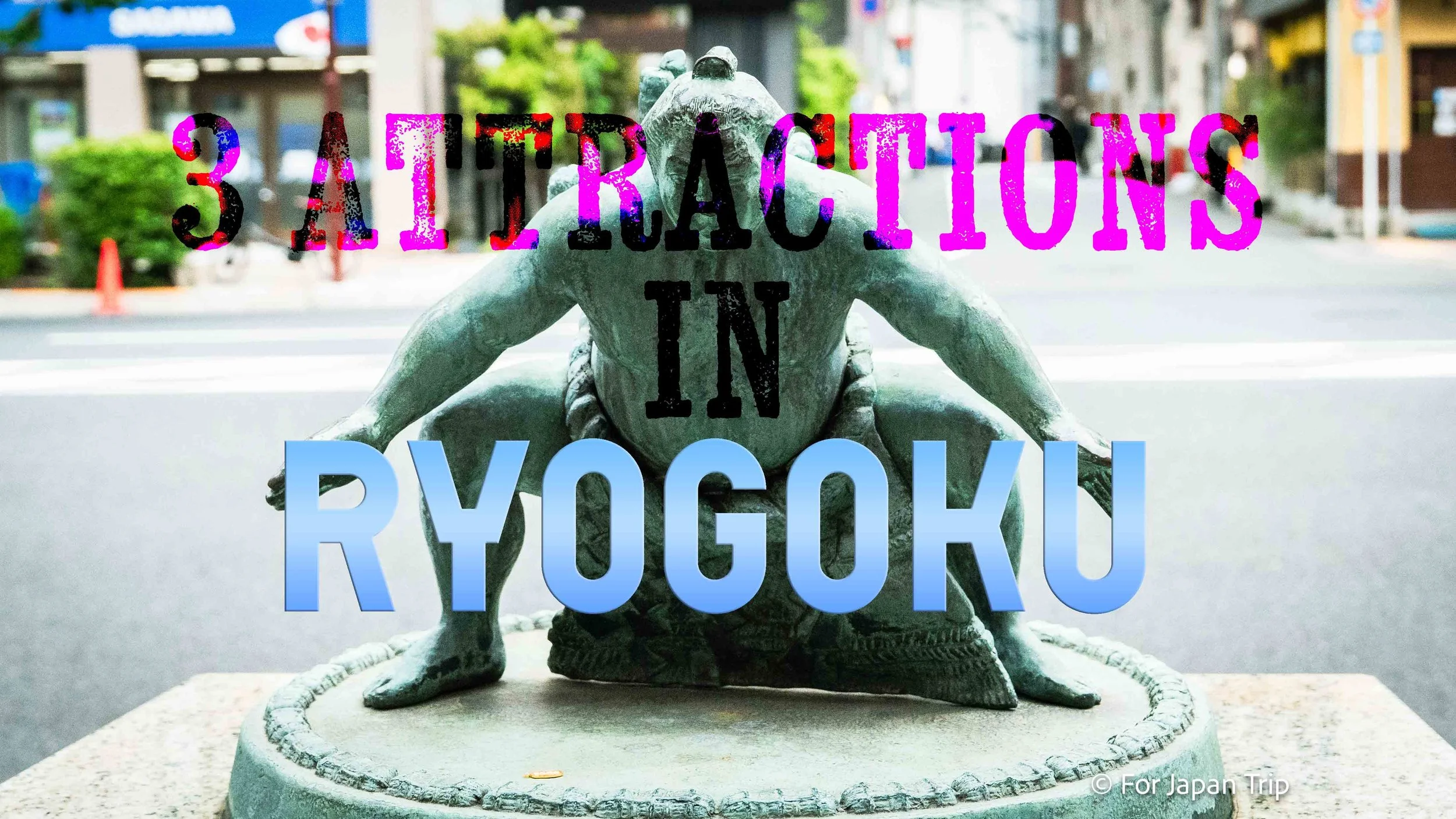Top 3 Attractions in Sugamo, Tokyo Travel
※updated on July 20 2025
Sugamo is affectionately known as the "Harajuku for Grandmas" and is a charming neighborhood in Tokyo famous for its nostalgic shopping streets and warm, welcoming atmosphere. Located on the JR Yamanote Line, Sugamo Station is just about 19 minutes from Tokyo Station, making it relatively easy to access.
The most well-known spot in the area is the Sugamo Jizo-dori Shopping Street, located right in front of the station. This retro-style street is lined with long-established shops selling traditional sweets, Japanese pickles, and the iconic red underwear that has become a local specialty. It's the perfect place for a relaxing stroll and local shopping.
Nearby, you'll also find Koganji Temple (also known as Togenuki Jizo-son), a popular place of worship where many visitors come to pray for good health and longevity.
With its nostalgic feel and friendly locals, Sugamo is gaining popularity among both younger generations and international tourists. It’s a unique area where you can experience the warmth of Tokyo’s downtown culture and the charm of everyday Japanese life.
1) Sugamo Jizo-dori Shopping Street – Local Food
Sugamo Jizo-dori Shopping Street is the heart of Sugamo, affectionately known as the “Harajuku for Grandmas.” Located just a short walk from JR Sugamo Station, this approximately 800-meter-long street is lined with around 200 shops. Visitors can find a variety of stores, including traditional Japanese sweets shops, pickle vendors, a specialty store for red underwear (a symbol of good luck), and shops selling health-related goods. The street is especially lively with visitors heading to the nearby Togenuki Jizo (Koganji Temple), creating a warm and bustling atmosphere throughout the area.
Local street food and snacks are also a highlight of Jizo-dori. You can enjoy traditional sweets like kusa mochi (mugwort rice cakes), mame daifuku (sweet red bean mochi), classic taiyaki (fish-shaped cakes filled with sweet red bean paste), and other nostalgic treats—perfect for eating while you stroll. On weekends and public holidays, the street fills with elderly locals and curious visitors alike, making for a lively scene full of friendly conversations and helpful recommendations from shop owners.
With its retro charm, warm community spirit, and prayers for health and longevity, Sugamo Jizo-dori Shopping Street offers a unique opportunity for tourists to experience everyday Japanese culture and the heartfelt atmosphere of Tokyo’s traditional downtown.
2) Koganji Temple (Togenuki Jizo-son)
Koganji Temple, located in Sugamo, Toshima City, Tokyo, is affectionately known as Togenuki Jizo-son and has long been a place of deep spiritual devotion. Its official name is Sōtō-shū Banchōzan Koganji. Originally founded during the Edo period, the temple is especially famous for its tradition of the "Arai Kannon" (Washing Kannon).
Visitors come to pour water over the statue of Kannon located within the temple grounds, in the belief that this ritual will cleanse physical and spiritual ailments. Many worshippers visit the temple to pray for relief from pain and suffering, and to make personal wishes.
Situated just steps from the lively Sugamo Jizo-dori Shopping Street, Koganji is easy to visit while enjoying traditional Japanese sweets and browsing shops for health-related goods. The temple attracts a wide range of visitors—from the elderly and young people to international tourists—thanks to its welcoming and heartwarming atmosphere.
As a popular “healing temple” where people pray for good health and long life, Koganji offers a unique glimpse into Tokyo’s local traditions, downtown culture, and the enduring spirit of Japanese faith.
3) Shinsho-ji Temple
Shinsho-ji Temple is a historic Buddhist temple located just off the popular Sugamo Jizo-dori Shopping Street in Tokyo. It is best known for housing one of the “Six Jizo of Edo”, a large statue of Jizo Bodhisattva that has been cherished for centuries as a protector of travelers. The statue stands approximately 2.7 meters tall and was created in 1714. Today, it is officially recognized as a Cultural Property of Tokyo.
The origins of Shinsho-ji trace back to the Nara period, one of the earliest eras in Japanese history. The temple was rebuilt in its current form during the early Edo period in 1615.
Within the temple grounds, you can also find a stone monument inscribed with a haiku by the famous poet Matsuo Basho, making the site a meaningful place for those interested in traditional Japanese literature and culture.
Whether you're exploring the vibrant shopping street or seeking a quiet moment of reflection, Shinsho-ji offers visitors a chance to experience Tokyo's deep cultural roots and historic spiritual traditions.
"Enjoy local food at the shopping street known as 'Grandma’s Harajuku' and pray for health and longevity at Togenuki Jizo. Discover the unique charm that only Sugamo has to offer."
Recommended Area







